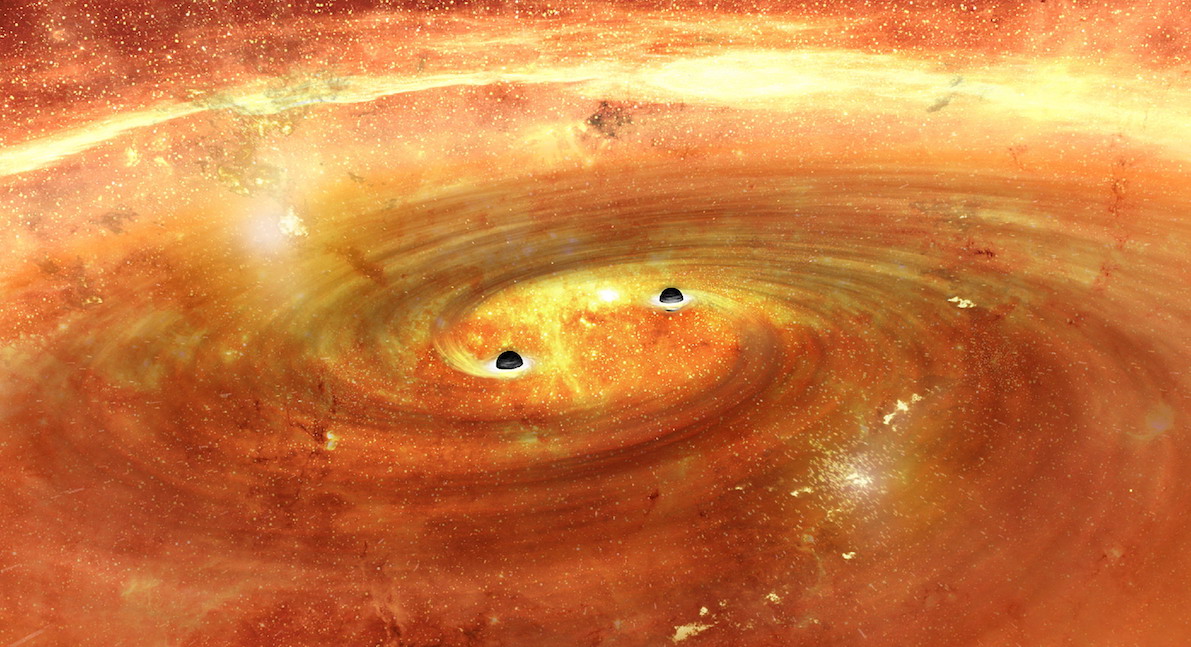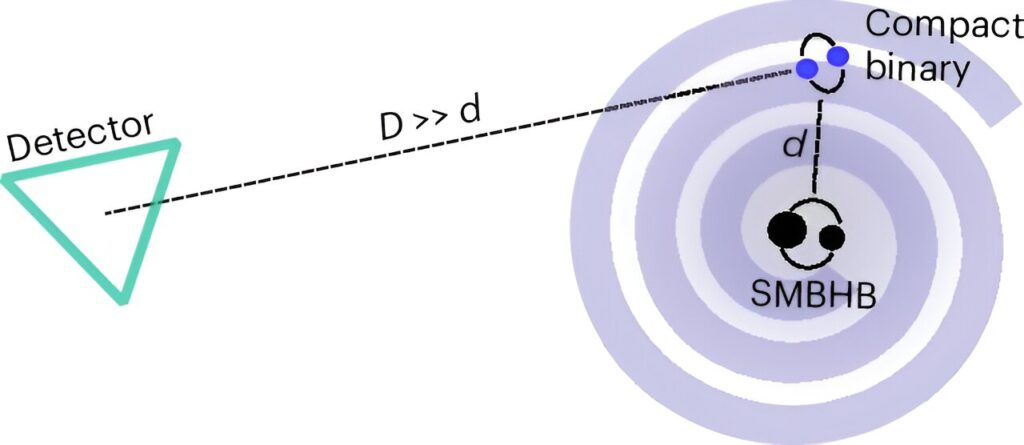An international group of astrophysicists has proposed a new method for finding pairs of supermassive black holes. For this purpose, they want to analyze gravitational waves emitted by nearby black holes of low mass.

The origin of supermassive black holes at the centers of galaxies is still one of the biggest mysteries in astronomy. Perhaps they were always massive and formed when the Universe was still very young. On the other hand, they may have grown over time by absorbing matter and merging with other black holes.
When a supermassive black hole is about to eat another massive black hole, it emits gravitational waves, which are ripples in space-time that propagate through the Universe. The problem is that the detection of their signals is not yet possible because current detectors are not sensitive to the very low frequencies of the gravitational waves they emit. Next-generation detectors such as the LISA space mission will partially remedy this situation, but detecting the most massive black hole pairs will still remain beyond their capabilities.
A team of researchers has come up with an original way to solve the problem. It consists of investigating higher frequency gravitational waves emitted by pairs of stellar-mass black holes that are in the same galaxy.

According to scientists, a pair of stellar-mass black holes essentially acts as a beacon. By detecting tiny modulations in the waves they emit, it is possible to identify hidden supermassive black hole binaries at vast distances with masses 10 to 100 million times that of the Sun.
It is worth noting that in order to realize this technique in practice, scientists will need detectors of gravitational waves, sensitive in the decihertz range. Although such devices don’t exist yet, they are easier to design and build than sensors capable of detecting gravitational waves from supermassive black holes themselves.
Earlier we talked about whether gravitational wave detectors can detect warp drive operation.
According to Phys.org


